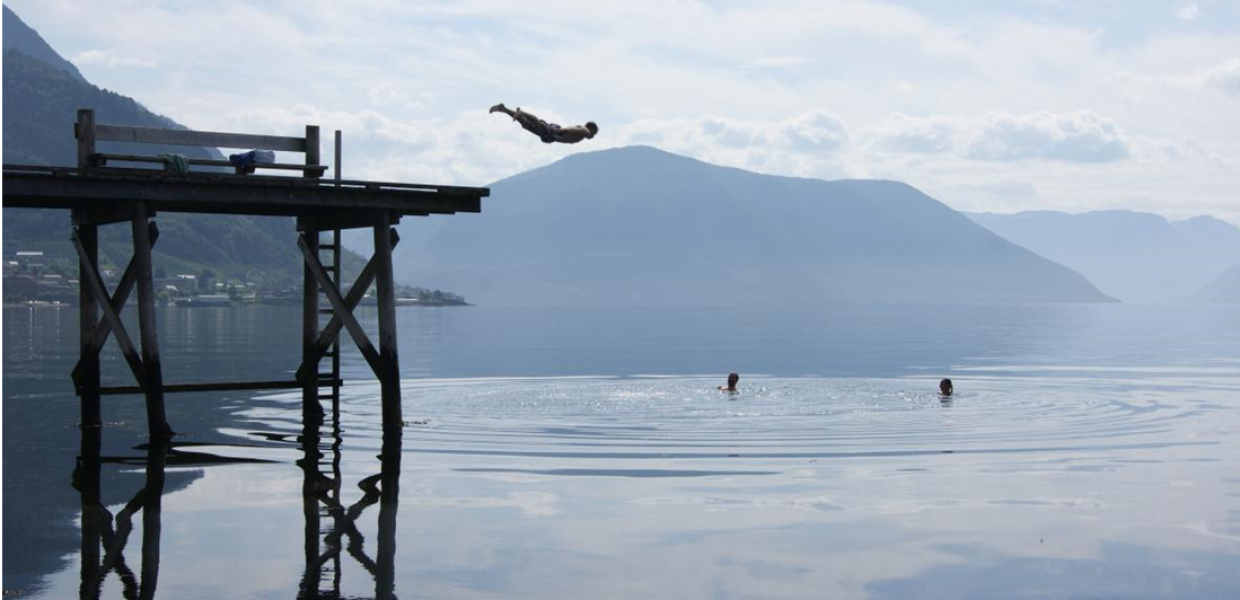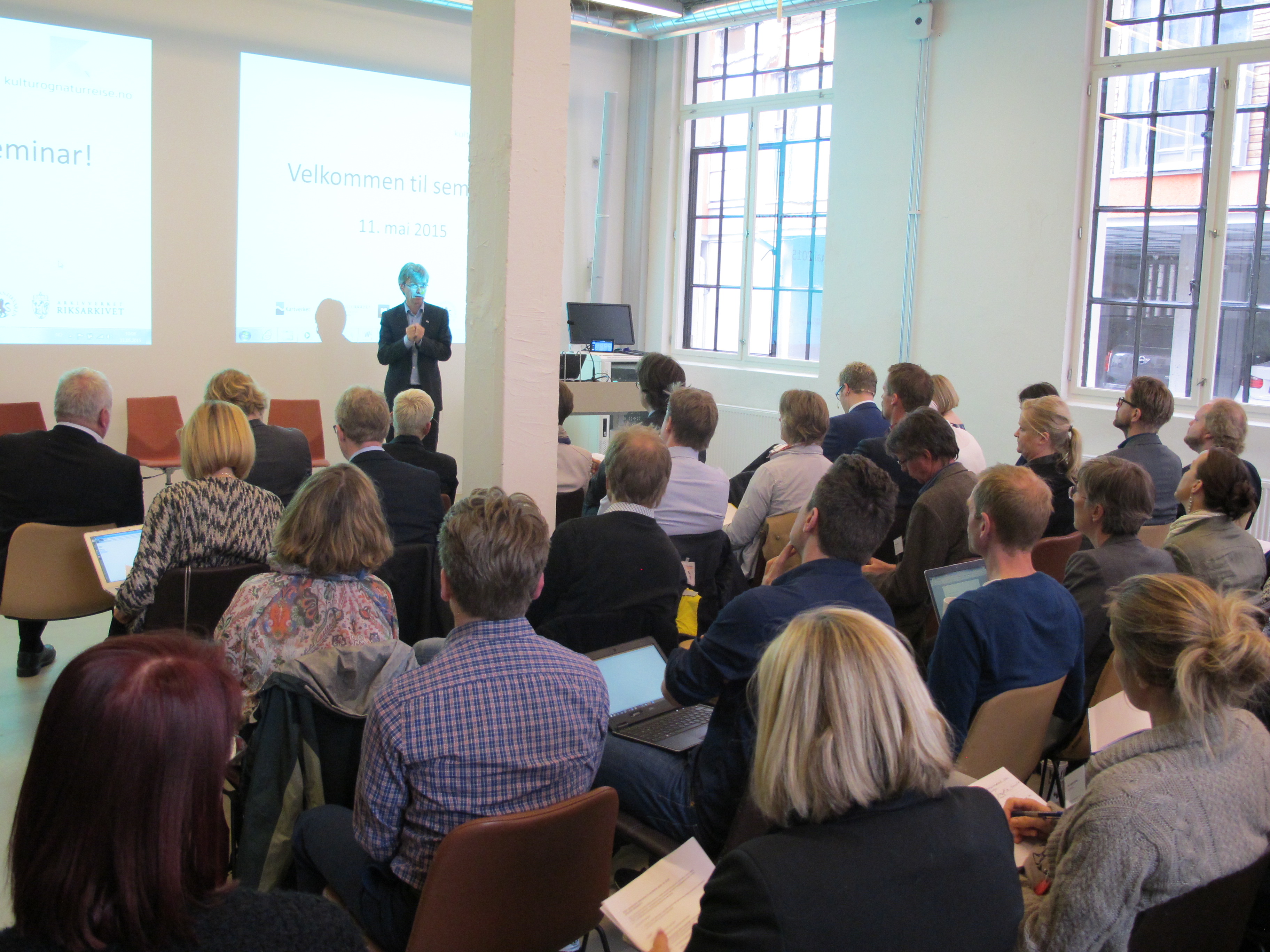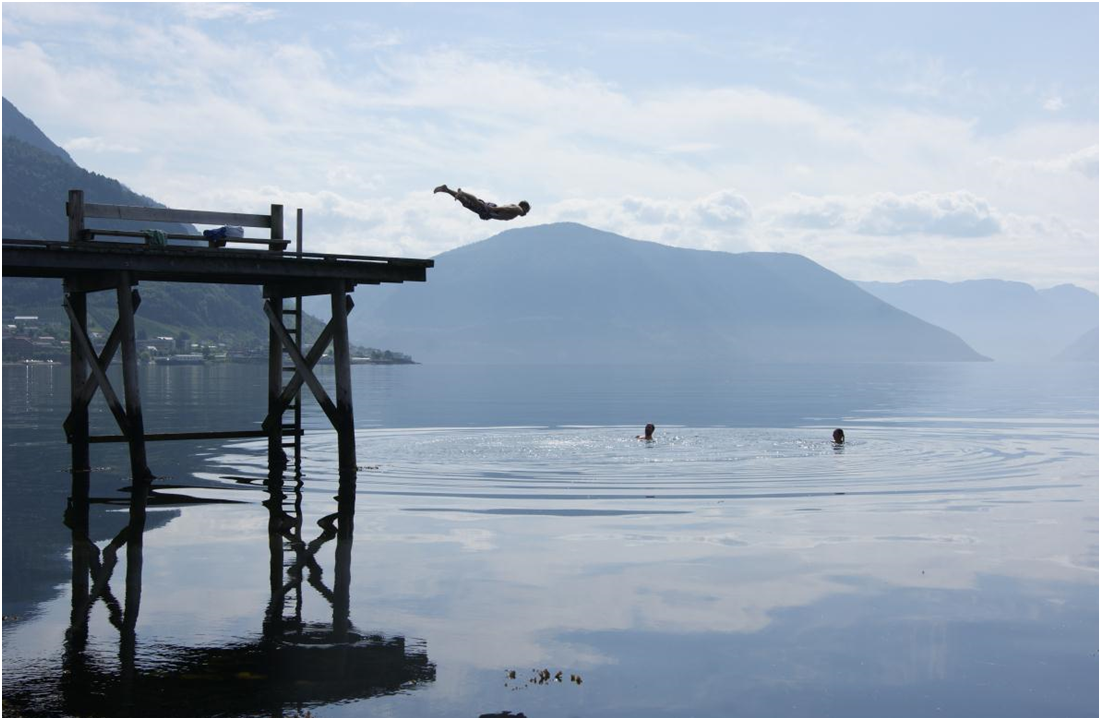Coordination is key: Lessons from Oslo on opening up cultural data

This is a guest blog written by Sarah McSeveny-Åril, a senior advisor at the Norwegian Arts Council and Heritage Here, a cross-agency national project in Norway. Last week, the Arts Council held a day-long seminar in Oslo on the potential value of opening up public data. Here, we hear about more and the debates and discussions that took place.
Imagine you are sitting on a train admiring the majestic landscape of the Dovre mountain range in central Norway…
Would you know that this is the most important area for wild reindeer in Europe? Perhaps you're curious about how medieval pilgrims made their way through these mountains to Nidaros Cathedral and the grave of Saint Olav? Would you realise that the very area you are travelling through was also a strategic centre for the German army during World War II? Or maybe you're just wondering who lived here, as you travel on a railway built over 100 years ago?
The answers to these and other questions lie in numerous national and local databases in Norway. So how can we access and use this content from the comfort of our seat as we speed through the wonderful Norwegian countryside? That is when Heritage Here comes into play.
To recap, 'Heritage Here' is a national project started in 2012 with two main objectives: first, to help increase access to and use of public information and local knowledge about culture and nature, and second, to promote the use of better quality open data.

A talk during the seminar. Image: Norsk Kulturrådet, CC BY SA.
Gathering together the decision-makers
The experiences of Heritage Here revealed the ever-increasing demand for access to high quality open data. To raise the discussion to a management level, the project coordinators decided to hold a seminar on the 11 May for ‘decision-makers’ from the public sector, and more specifically, the cultural heritage sector.
The Directors of the Heritage Here’s partners - the Norwegian Mapping Authority, the Arts Council Norway, the Directorate of Cultural Heritage and the National Archives - all gathered, along with the head of the National Library of Norway, to contribute to the day-long discussions.
Among the speakers were State Secretaries from the Ministry of Culture and the Ministry of Local Government and Modernization; the Director of Norway’s national Agency for Public Management and eGovernment; and, with his valuable outside perspective, Europeana Members Council member and Head of Sweden’s Secretariat for National Coordination of Digitisation, Digisam, Rolf Källman.
The seminar hoped to investigate the future of the public sector's work with open data and to examine what overarching role the leaders of our cultural institutions should take. It proved to be a stimulating day, and coordination, cooperation, user focus, a ‘sharing-is-caring’ culture and innovation emerged as the main messages to take away.
Cooperation and coordination
The Director of Norway’s Agency for Public Management and eGovernment’s Ingelin Killengren applauded taking a cross-sector approach. For Killengren, this type of coordination proves both mutually beneficial and central to successfully making the best decisions. "Dive in and get wet – don’t wait until everything is perfect", she advised to her fellow professionals.
Rolf Källman meanwhile pointed out the benefits of having a coordinating national body to drive forward work in this field. You need to have your "landing strip" in place, he remarked, or to put it another way – don't launch into the digitising process without ensuring there a suitable infrastructure is in place.

Image: Ingrid Kittelsen, CC BY.
Know your user
The challenges related to two concepts - ‘management’ and ‘dissemination’ - were also raised both on the podium – by researcher Ole Marius Hylland from Telemarksforsking - and by the audience on several occasions. This reflects a shift from an institution-centric focus to a user-centric one; museums and archives are no longer the bottom line. They have almost become, as Digisam’s Rolf Källman out it, another ‘analogue’ “application” of cultural heritage content - just one more way for us to experience ‘data’. We must therefore think about ‘dissemination’ throughout the process of digitising and making data available; or, in Jørn Holme, Director of the Directorate of Cultural Heritage's words, we must foster “two-way communication”.
Open up for innovation
Another takeaway message was the importance of innovation. Thomas Nortvedt, from the Ministry of Local Government and Modernisation, spoke about the government’s policies on the country’s plans for open data. He underlined that rather than seeing opening up data as the final goal in itself, we should use it as a tool to reach our goals.
Information has to exist in the digital arena in order to be relevant and usable in other contexts. As Heritage Here project manager Sidsel Hindal put it - “the ‘smartest’ people don’t necessarily work here” - often outside our office walls, we find the creative minds with the ideas, skills (and even finances) to use cultural heritage content in ways we could never dream of. This year’s hackathon #Hack4no, hosted by National Mapping Authority as a follow-up to Heritage Here’s last February is an exciting example of how to enable this kind of innovation.
After a day of stimulating professional exchange and great opportunities to get to know each another, the seminar successfully offered up a platform for open cross-sector discussion. The overwhelming support for opening up content held by our institutions was clear. Hopefully, the day will prove to provide a catalyst for decision-makers to commit to a coordinated plan for the future of open data. Find out more here.
